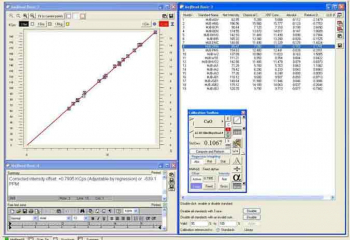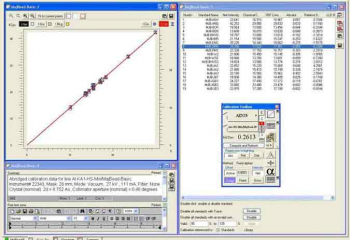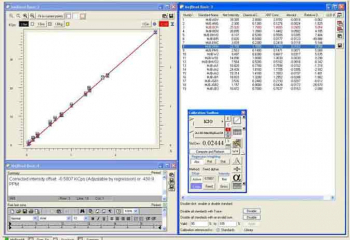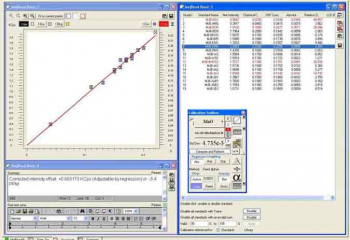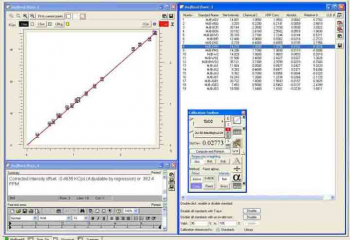S4 PIONEER Calibration curves
S8 TIGER Calibration curves
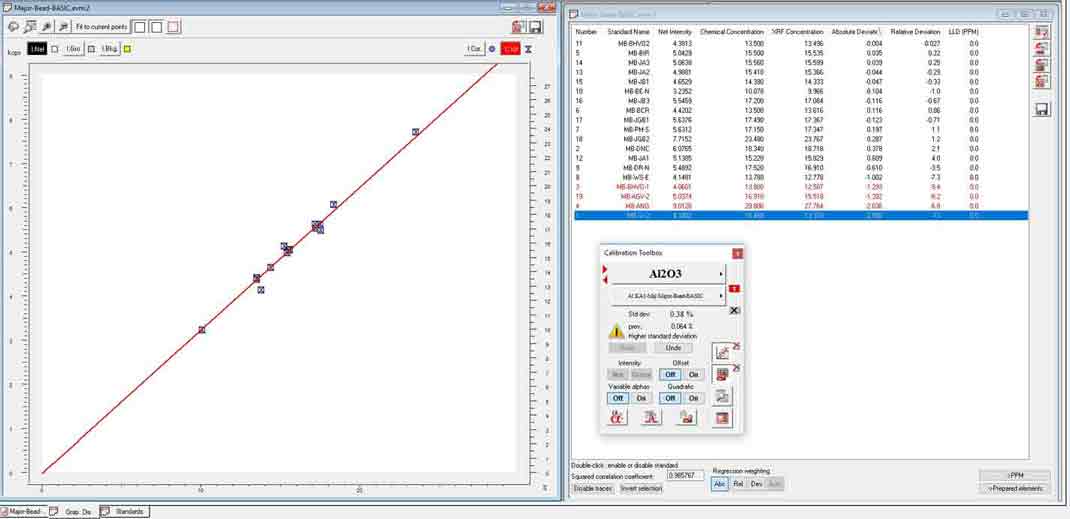 |
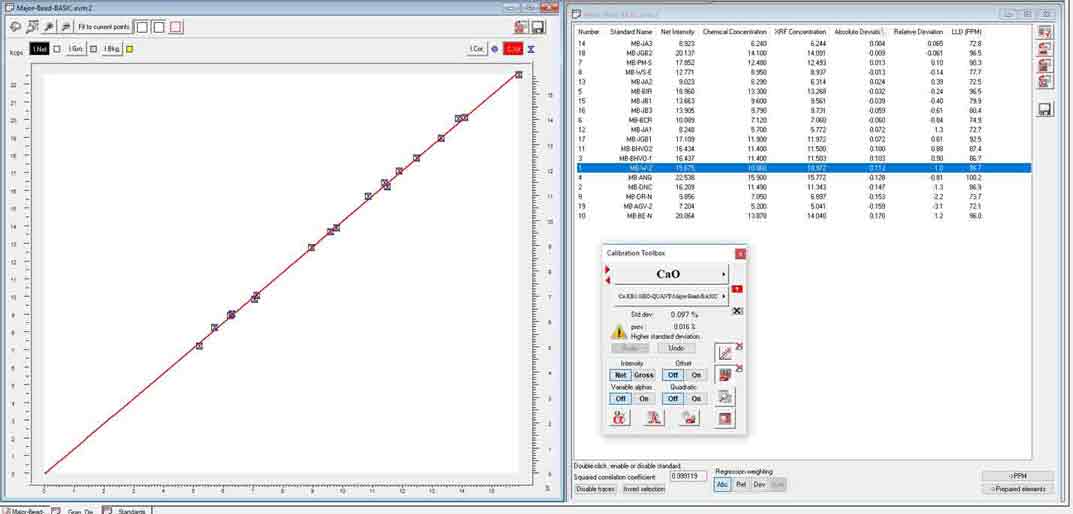 |
 |
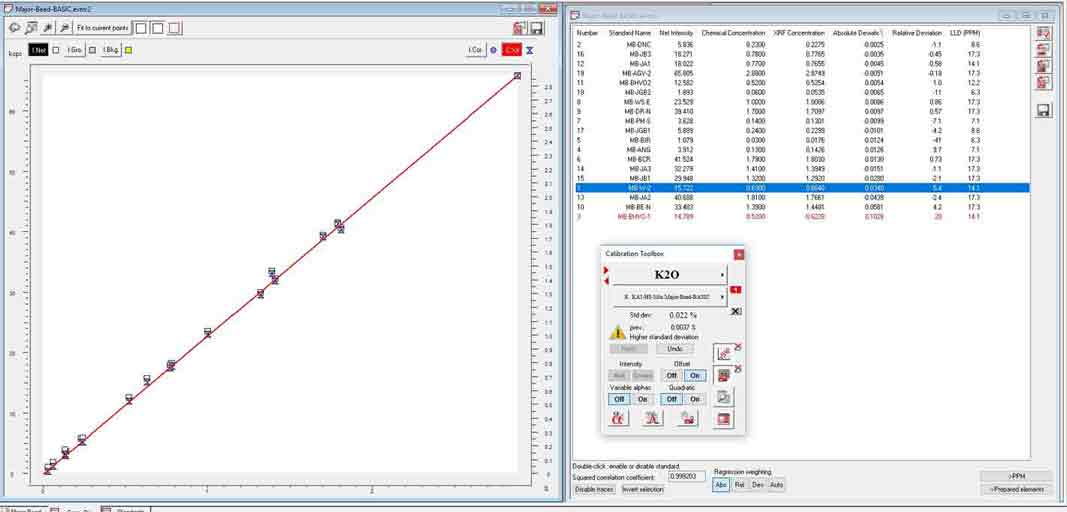 |
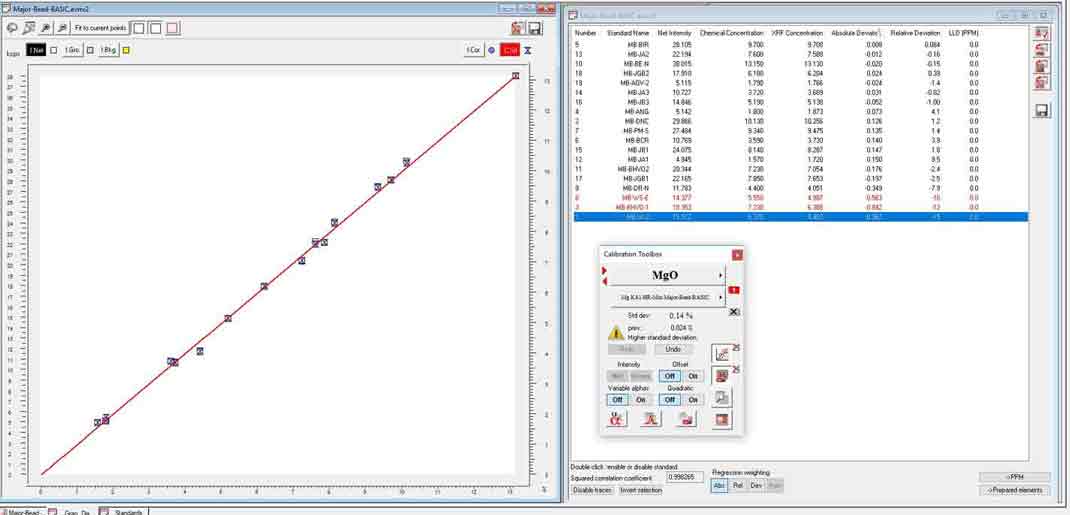 |
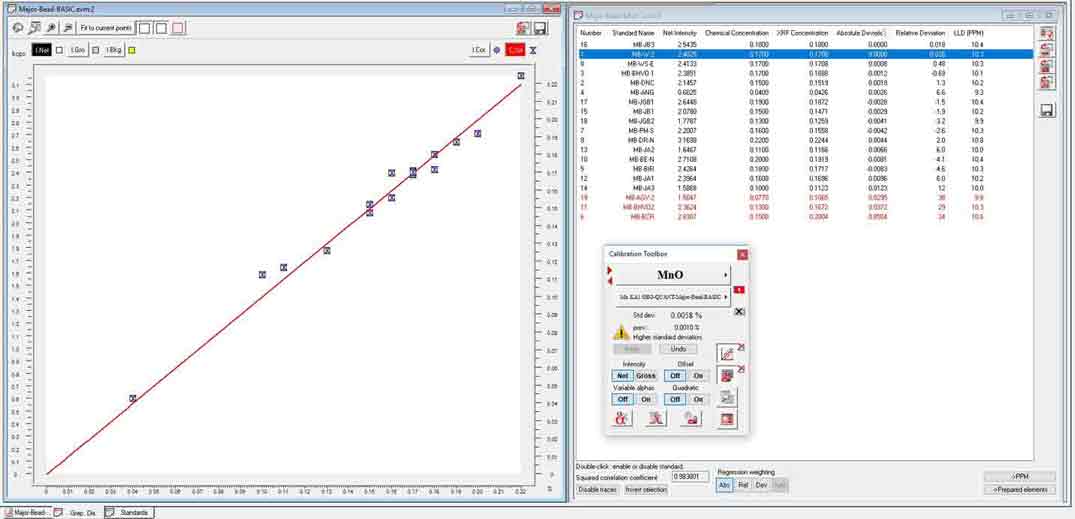 |
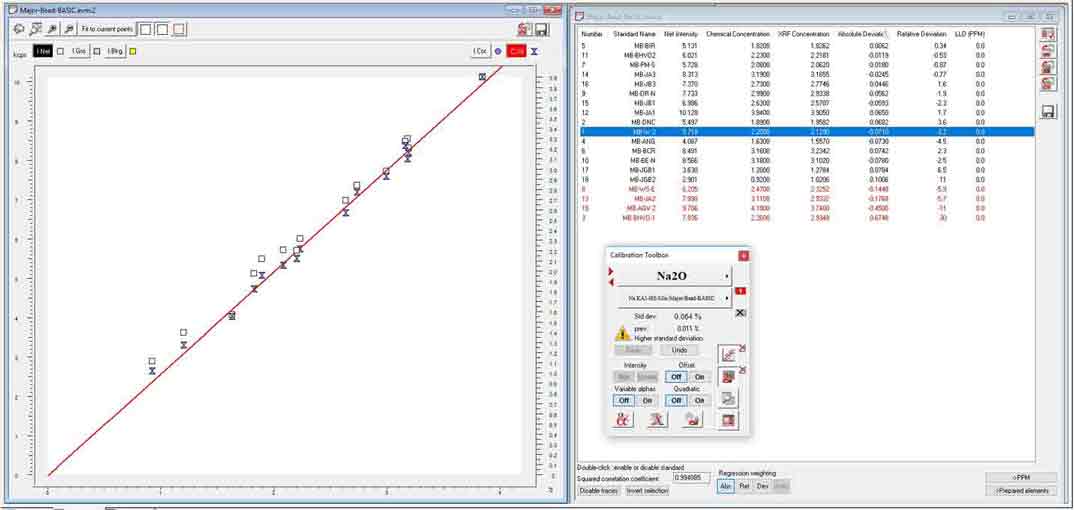 |
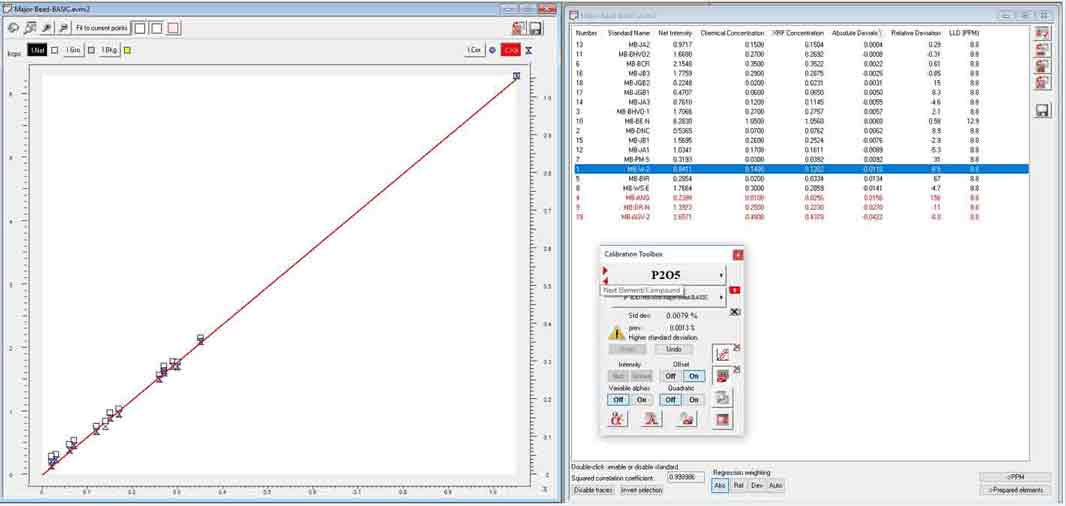 |
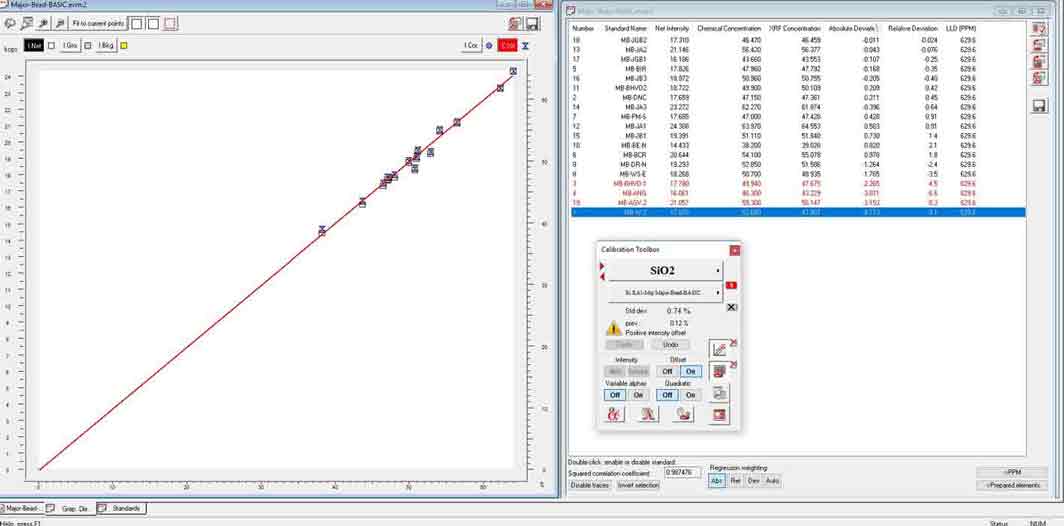 |
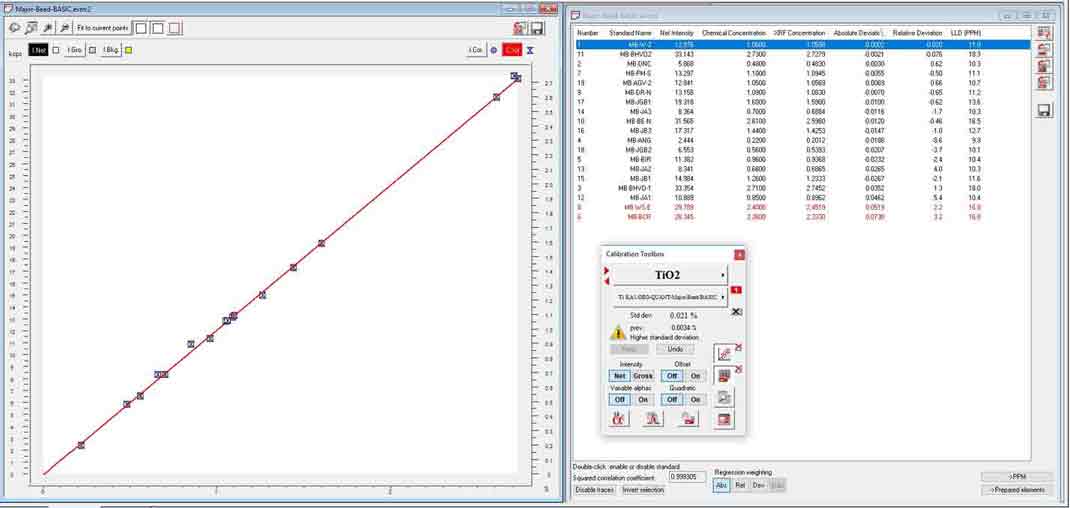 |
Instrument is loaded with software containing theoretical elemental line library. By this software, qualitative (identification of major and minor elements) and semi-quantitative analysis of elements (>0.5%) by standardless method for unknown sample is possible. Standardless method has elemental lines calibrated and calibration coefficients stored in the line library. However, for precise and accurate quantitative determination, instrument has to be calibrated taking into consideration our specific needs, sample types and instrument configuration.
Calibration involves identification of optimum conditions of several variable factors for each element, like identifying correct elemental peak and back ground(s), power settings (kV and mA) for excitation of the line spectrum, crystal selection, detector type (scintillation or flow proportional), pulse height, collimator mask, counting time, dead time etc., followed by matrix and inter-element interference correction. This is achieved by repeated analysis of standard samples with known certified values and correcting the variables to yield elemental concentration close to the certified reference values for standards. Calibration curves for major elements based on 19 International standards of basic compositions are given here. These figures illustrate concentration vs intensity, which is, recommended versus obtained values. Excellent correlation of Chemical vs XRF concentration with good linear calibration lines and lower standard deviation supports reliability of analysis and method of sample preparations. .




 RTI Act
RTI Act

